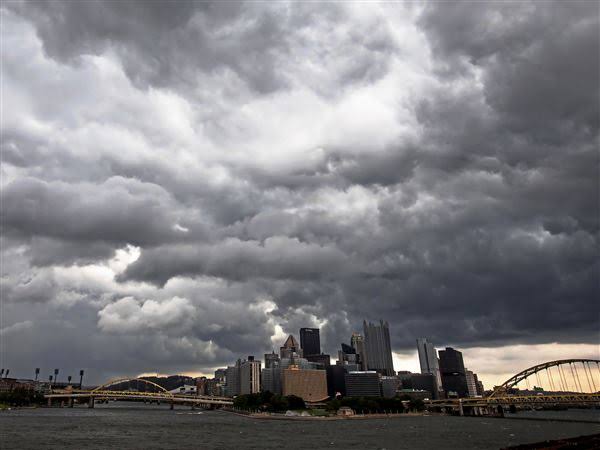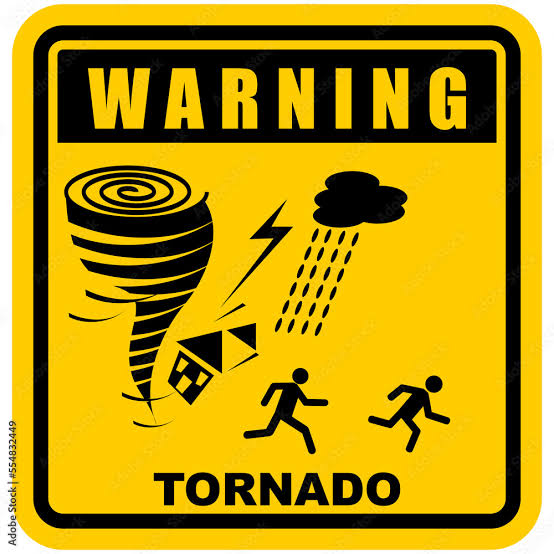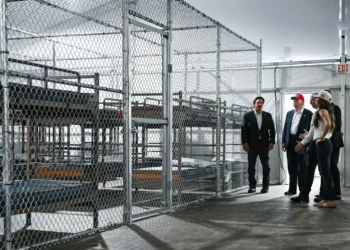A powerful weather system brought devastating storms to the Pittsburgh area, leaving tens of thousands without power and prompting tornado warnings.
Wind gusts of up to 70 mph caused significant damage, downing trees and resulting in widespread power outages. The Duquesne Light company reported a substantial number of customers affected by the outages.

The severe thunderstorm warning was issued as the storm system moved through the region, bringing with it a host of hazards. Residents in Pittsburgh and surrounding areas were advised to remain indoors and avoid travel unless absolutely necessary.
Severe Storms Hit Pittsburgh: Tornado Warnings, 70 MPH Winds, and Power Outages – Breaking Report
A powerful storm system is sweeping through Pittsburgh, causing tornado warnings, damaging winds, and significant power outages. As the situation continues to unfold, residents are advised to stay informed and take necessary precautions.
Current Storm Situation
The National Weather Service has issued a severe thunderstorm warning for parts of western Pennsylvania, indicating a significant threat from the storm. The warning signifies that conditions are conducive to severe weather, including tornadoes and high winds.
As of shortly before 6 p.m., Duquesne Light reported 200,000 customers without power, highlighting the severity of the outage. The utility company is working diligently to restore power, but the extent of the damage is still being assessed.

Immediate Threats to Residents
Residents in the affected areas face several immediate threats, including:
- Tornado warnings that indicate potential tornadoes in the area.
- Winds reaching speeds of up to 70 MPH, which can cause significant damage.
- Widespread power outages that can affect critical infrastructure and daily life.
It is crucial for residents to stay indoors, avoid travel unless necessary, and keep updated with the latest weather reports from reliable sources like WPXI.

Emergency Declarations
In response to the severe weather, local authorities have issued emergency declarations to mobilize resources and coordinate relief efforts effectively. These declarations enable a swift response to the crisis, ensuring that affected residents receive the necessary support.
For the latest updates on the storm and restoration efforts, residents are encouraged to follow WPXI weather updates and check the Duquesne Light outage map for real-time information on power outages.
Storm System Overview and Development
A powerful storm system swept through Pittsburgh, bringing with it severe weather conditions including tornado warnings and high winds. The development of this storm system was rapid, catching many off guard.

Severe Weather Timeline
The severe weather event unfolded over several hours, with the most intense period occurring during the late afternoon and early evening. Tornado warnings were issued for multiple counties, and wind gusts reached as high as 71.3 mph at the Pittsburgh airport, marking the third strongest gust ever recorded there.
The timeline of the event is crucial for understanding the impact. The storm began to intensify around 3 PM, with severe thunderstorm warnings being issued across Western Pennsylvania.
Affected Areas in Western Pennsylvania
The storm system affected a broad area, including Pittsburgh and surrounding neighborhoods. The strong winds and tornado warnings led to significant disruptions, particularly in areas with dense populations.
- Allegheny County was heavily impacted, with multiple reports of property damage.
- Neighboring counties, including Westmoreland and Butler, also experienced severe weather conditions.
Meteorological Causes
The meteorological causes behind the storm system were complex, involving a combination of atmospheric conditions that led to the rapid intensification of the storm. Weather patterns in the region contributed to the severity of the event.

The interaction between different air masses and the topography of Western Pennsylvania played a significant role in the storm’s development and impact.
Tornado Warnings Issued Across Pittsburgh Region
The National Weather Service issued a tornado warning for the Pittsburgh region, signaling a potentially dangerous situation for local residents. This warning was not isolated, as parts of Washington and Beaver counties were also under the threat, along with areas in neighboring Ohio and West Virginia.
National Weather Service Alerts
The National Weather Service played a crucial role in alerting the public to the tornado threat. Through timely warnings and updates, they helped ensure that residents were prepared for the worst. The alerts were disseminated through various channels, including mobile devices, radios, and television broadcasts.
Key aspects of the NWS alerts included:
- Timely warnings to enable quick action
- Specific details on the tornado’s location and trajectory
- Recommendations for seeking shelter and staying safe
Tornado Sightings and Reports
Residents in the affected areas reported seeing signs of a tornado, including funnel clouds and debris. These sightings were critical in confirming the tornado’s presence and validating the National Weather Service’s warnings.
The reports highlighted the importance of community vigilance during severe weather events. By reporting their observations, residents contributed to a more accurate understanding of the storm’s impact.
Warning System Effectiveness
The effectiveness of the warning system was evident in the swift response of residents and authorities. The timely issuance of tornado warnings allowed for evacuations and other safety measures to be implemented, potentially saving lives.
The success of the warning system can be attributed to:
- The accuracy of National Weather Service forecasts and warnings
- The widespread dissemination of alerts through multiple channels
- The preparedness and responsiveness of the community

Destructive 70 MPH Winds Sweep Through Western PA
Destructive winds reached speeds of up to 70 MPH as they tore through Western Pennsylvania, leaving a trail of damage in their wake. The severe thunderstorm warning issued by the National Weather Service underscored the potential for significant destruction.

Wind Damage Assessment
The impact of the 70 MPH winds was felt across Western PA, with reports of downed trees, damaged roofs, and power lines snapped. The strong winds caused significant property damage, with numerous buildings affected.
Property owners are advised to inspect their properties for damage and report any hazards to the authorities. The full extent of the damage is still being assessed, but initial reports indicate widespread destruction.
Record-Breaking Wind Speeds
The wind speeds recorded during the storm were exceptionally high, with some areas experiencing gusts of up to 70 MPH. This is considered a record-breaking wind speed for the region, highlighting the severity of the weather event.
- Wind speeds were recorded at various weather stations across Western PA.
- The highest recorded wind speed was 70 MPH, emphasizing the storm’s intensity.
- Such high winds are rare in the region, making this event particularly noteworthy.

Wind-Related Injuries
Unfortunately, the strong winds also led to wind-related injuries, with several people reporting to hospitals with injuries sustained during the storm. The most common injuries were caused by falling debris and downed power lines.
Residents are urged to exercise caution when venturing outdoors and to avoid any downed power lines or other hazards. Emergency services are working to address the immediate needs of those affected.
Widespread Power Outages Reported Across Pittsburgh
Duquesne Light has reported a substantial number of customers without power due to the recent storms in Pittsburgh. As of the latest update, approximately 200,000 customers are experiencing power outages across the region.
Neighborhoods Most Affected
The severe weather has had a varied impact across different neighborhoods in Pittsburgh. Areas with dense tree coverage and older infrastructure are among the most affected. Residents in neighborhoods such as Shadyside, Squirrel Hill, and parts of Oakland have reported significant power disruptions.
Homeowners are advised to check with Duquesne Light for updates on their specific outage status and estimated restoration times. The utility company is working diligently to restore power to all affected areas.
Estimated Restoration Times
Duquesne Light has deployed emergency repair crews to address the widespread power outages. While the exact restoration times vary depending on the severity of damage in each area, the company is prioritizing critical infrastructure and major outages first.
- Initial assessments indicate that power restoration could take several days in some areas.
- Customers can track the status of their outage through Duquesne Light’s online outage map.
- Regular updates are being provided through Duquesne Light’s customer communication channels.
Critical Facilities Impacted
The power outages have also affected several critical facilities, including hospitals and emergency services. Fortunately, backup power systems are operational in these facilities, ensuring continuity of essential services.
Despite the challenges, coordination between utility companies, emergency services, and local authorities is underway to mitigate the impact of the power outages and expedite restoration efforts.
Duquesne Light’s Response to Massive Outages
In response to the severe storms hitting Pittsburgh, Duquesne Light has taken immediate action to address the massive power outages. The company has been working diligently to restore electricity to affected areas, prioritizing safety and efficiency in their efforts.
Emergency Repair Crews Deployed
Duquesne Light has deployed emergency repair crews to the most affected areas. These crews are working around the clock to repair damaged infrastructure and restore power. The deployment includes:
- Line crews to repair downed power lines
- Tree trimming teams to clear vegetation from power lines
- Electrical crews to restore power to critical facilities
Customer Communication Efforts
Effective communication with customers is a top priority for Duquesne Light. The company is using various channels to keep customers informed about the status of power outages and restoration efforts, including:
- Outage maps available on their website
- Real-time updates on social media platforms
- Direct notifications through their mobile app
Prioritization of Restoration Efforts
Duquesne Light is prioritizing restoration efforts based on the severity of the outages and the critical nature of the affected infrastructure. This includes:
- Restoring power to critical facilities such as hospitals and emergency services
- Focusing on areas with the largest number of affected customers
- Utilizing advanced technology to efficiently identify and repair outages
By deploying emergency repair crews, maintaining open lines of communication with customers, and prioritizing restoration efforts, Duquesne Light is working to mitigate the impact of the power outages caused by the severe storms in Pittsburgh.
Tracking Outages: Duquesne Light’s Outage Map Analysis
Residents affected by the recent storms in Pittsburgh can now track power outages in real-time using Duquesne Light’s interactive outage map. This valuable resource provides up-to-date information on outages across the region, helping customers stay informed about the status of their power.

How to Access Real-Time Outage Information
To access the outage map, customers can visit Duquesne Light’s official website and navigate to the outage section. The map is updated regularly to reflect the current status of power outages, including the number of affected customers and the estimated time for restoration.
Understanding Outage Patterns
The outage map not only provides real-time data but also helps in understanding outage patterns. By analyzing the map, customers can identify areas most affected by the storms and plan accordingly. This information is crucial for both residents and businesses to prepare for potential prolonged outages.
Reporting New Outages
If you’re experiencing a power outage, it’s essential to report it to Duquesne Light. The utility company provides multiple channels for reporting outages, including their website, mobile app, and customer service hotline. Prompt reporting helps ensure that the outage is addressed as quickly as possible.
By utilizing Duquesne Light’s outage map and reporting new outages, customers can stay informed and help facilitate the restoration process. For the latest information on power outages and restoration efforts, visit Duquesne Light’s website.
WPXI Weather Coverage and Updates
As the storm hits Pittsburgh, WPXI’s weather coverage becomes an indispensable resource for residents. The station provides live reporting from storm-affected areas, giving viewers firsthand information about the severe weather conditions.
Live Reporting from Storm-Affected Areas
WPXI’s live reporting allows residents to stay informed about the latest developments in their neighborhoods. This coverage includes real-time updates on tornado warnings, wind speeds, and power outages, helping viewers make informed decisions about their safety.
Meteorologist Insights and Analysis
The meteorologists at WPXI provide in-depth analysis of the storm system, explaining the meteorological causes behind the severe weather. Their insights help viewers understand the situation better and prepare for the coming days.
Forecast for Coming Days
WPXI also offers a detailed forecast for the coming days, enabling residents to plan ahead. By understanding the weather patterns that are expected to follow the initial storm, residents can take necessary precautions to ensure their safety and the safety of their property.
With WPXI’s comprehensive weather coverage, Pittsburgh residents can stay up-to-date on the latest weather conditions and updates, helping them navigate through the challenges posed by severe storms.
Documented Storm Damage Across Pittsburgh Neighborhoods
Pittsburgh neighborhoods suffered significant damage from the recent storms, with widespread reports of property damage and infrastructure impact. The severity of the weather event has left many residents and local authorities assessing the aftermath.

Property Damage Reports
The storms caused considerable damage to properties across Pittsburgh, with numerous reports of roof damage, broken windows, and downed trees. Homeowners are now dealing with the costly repairs and insurance claims. Property damage was one of the most immediate and visible effects of the storm.
In some neighborhoods, entire blocks were affected, with debris littering the streets and homes rendered uninhabitable. The full extent of the property damage is still being assessed, but initial reports indicate a significant financial impact on residents and property owners.
Infrastructure Impact
The infrastructure across Pittsburgh was also severely impacted, with power lines downed, roads blocked by debris, and other critical infrastructure affected. The infrastructure impact has not only affected daily life but also posed significant challenges for emergency responders and repair crews.
- Downed power lines and poles
- Blocked roads and highways
- Damaged public buildings and facilities
Economic Cost Assessment
Assessing the economic cost of the storm damage is a complex task, involving not just the immediate repair costs but also the long-term impact on local businesses and the overall economy. Initial estimates suggest a substantial economic burden on the city and its residents.
The economic impact is multifaceted, affecting homeowners, businesses, and the city’s budget. As the city begins to recover, understanding the full economic cost will be crucial for planning recovery efforts and mitigating future risks.
Emergency Response to Pittsburgh Weather Crisis
The emergency response to the Pittsburgh weather crisis was characterized by swift actions from first responders and local authorities. This response was multifaceted, involving various agencies and services to address the immediate needs of the affected residents.
First Responder Actions
First responders, including police, firefighters, and emergency medical technicians (EMTs), played a crucial role in the emergency response. They were quick to respond to emergency calls, providing medical assistance, securing dangerous areas, and helping those trapped due to the storm.
Rapid Response was critical in saving lives and preventing further injuries. The first responders worked under challenging conditions, navigating through debris and flooded areas to reach those in need.
Temporary Shelters and Resources
To accommodate those displaced by the storm,temporary shelterswere set up across the city. These shelters provided not only a safe place to stay but also essential resources such as food, water, and medical care. Local organizations and community groups were instrumental in supporting these efforts.
The provision of temporary shelters and resources was a key component of the emergency response, helping to alleviate the immediate suffering of the affected residents.

Coordination Between Agencies
Effective coordination between various agencies was vital to the success of the emergency response. This involved collaboration between local, state, and federal agencies, as well as non-governmental organizations. The coordination ensured a unified response, maximizing the impact of the relief efforts.
Through collaborative efforts, the emergency response was able to address the complex needs arising from the Pittsburgh weather crisis, providing a comprehensive support system for those affected.
The overall response to the Pittsburgh weather emergency was marked by dedication, resilience, and a commitment to supporting those in need.
Safety Measures During Severe Weather Events
When severe weather strikes, Pittsburgh residents must be prepared to take immediate action to ensure their safety. Severe weather events, such as tornadoes and destructive winds, can cause significant damage and disruption.
Tornado Safety Protocols
During a tornado warning, it’s crucial to seek shelter immediately. Residents should go to a basement or storm cellar if available. If not, they should go to an interior room or hallway on the lowest floor, away from windows and doors.
Additional safety tips include getting under a sturdy table or desk and covering your head and neck with your arms.
Power Outage Preparedness
Power outages often accompany severe weather events. To prepare, residents should have a plan for alternative lighting, such as flashlights or battery-powered lanterns. It’s also essential to have a battery-powered radio and a fully charged cell phone.
- Keep a backup power source, such as a portable generator.
- Store non-perishable food and water.
- Have a first aid kit on hand.
Emergency Communication Methods
Staying informed is critical during severe weather. Residents should sign up for emergency alerts from local authorities and keep a battery-powered radio with them. In case of a power outage, it’s essential to have a plan for communicating with family members.
Using a severe weather app can provide timely updates and warnings, helping residents stay safe.
Recovery Efforts Underway in Pittsburgh
Recovery efforts are in full swing in Pittsburgh, with a focus on supporting affected residents and businesses. The city is coming together to address the aftermath of the severe storms that brought tornado warnings, 70 MPH winds, and widespread power outages.
Community Clean-Up Initiatives
Community clean-up initiatives are a crucial part of the recovery process. Volunteers and city crews are working together to clear debris, repair damaged infrastructure, and restore essential services. Neighborhoods are being revitalized through these efforts, with a focus on making them safe and accessible for residents.
Key areas of focus include removing fallen trees and branches, repairing damaged buildings, and restoring power to affected areas. The community is rallying around these initiatives, with many residents volunteering their time and resources to support the efforts.
Support for Affected Residents
Support for affected residents is a top priority in the recovery efforts. Various organizations and government agencies are providing assistance with temporary housing, food, and other essential needs. Counseling services are also being made available to help residents cope with the trauma caused by the storms.
Community centers are serving as hubs for relief efforts, providing a central location for residents to access information, resources, and support. These centers are staffed by trained professionals who are equipped to handle a range of needs, from providing emotional support to helping with insurance claims.
Business Continuity Challenges
Business continuity is a significant challenge in the aftermath of the storms. Many businesses were forced to close temporarily due to power outages and property damage. Efforts are being made to support these businesses, including providing financial assistance and resources to help them recover and reopen.
The city is working closely with business owners to understand their needs and develop strategies to support their recovery. This includes expediting permits for repairs and reconstruction, as well as providing guidance on available resources and support services.
Historical Context: Pittsburgh’s Severe Weather Patterns
Understanding Pittsburgh’s severe weather patterns requires a look into its past, where historical events have provided valuable insights into the region’s vulnerability.
Pittsburgh has a history of experiencing severe weather, including tornadoes, which have had significant impacts on the community. Previous tornado events in the region have highlighted the importance of preparedness and understanding weather trends.
Previous Tornado Events in the Region
The region has seen its share of tornadoes, with some events being particularly destructive. For instance, historical records show that tornadoes have touched down in various parts of Western Pennsylvania, causing damage and disruption.
These events underscore the need for continued vigilance and preparedness among residents. By studying past tornado events, meteorologists and emergency responders can better predict and respond to future occurrences.
Changing Weather Trends in Western Pennsylvania
Weather trends in Western Pennsylvania have shown changes over the years, with some data suggesting an increase in the frequency and severity of severe weather events. Climate change is often cited as a factor contributing to these shifts.
Understanding these trends is crucial for long-term planning and mitigation strategies. By analyzing historical weather data, researchers can identify patterns that may inform future weather forecasting and emergency preparedness.
Lessons Learned from Past Storms
Past storms have taught valuable lessons about resilience and preparedness. Communities that have experienced severe weather events have developed strategies to mitigate the impact of future events.
These lessons include the importance of early warning systems, community education, and infrastructure resilience. By applying these lessons, Pittsburgh and its surrounding areas can better withstand severe weather events.
In conclusion, Pittsburgh’s history of severe weather provides a critical context for understanding the risks and opportunities for mitigation. By examining past events and trends, the community can work towards a more resilient future.
Conclusion: Moving Forward After the Storm
As the severe storms that hit Pittsburgh begin to subside, the city is now focused on recovery efforts. The storm aftermath has left a trail of destruction, with widespread power outages and property damage reported across the region.
The city is moving forward with recovery initiatives, including community clean-up efforts and support for affected residents. Duquesne Light is working to restore power to all affected areas, with estimated restoration times varying depending on the severity of the damage.
Pittsburgh’s experience with severe storms highlights the importance of preparedness and emergency planning. By understanding the risks associated with severe weather events, residents can take steps to protect themselves and their property.
As Pittsburgh continues to recover from the recent storms, the city will be better equipped to face future severe weather events. The recovery efforts underway will help to mitigate the impact of future storms, ensuring a safer and more resilient community.





















































